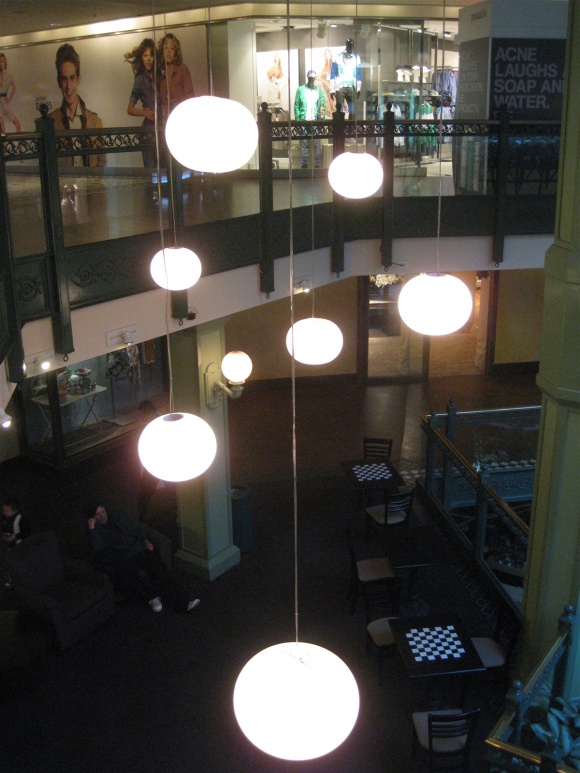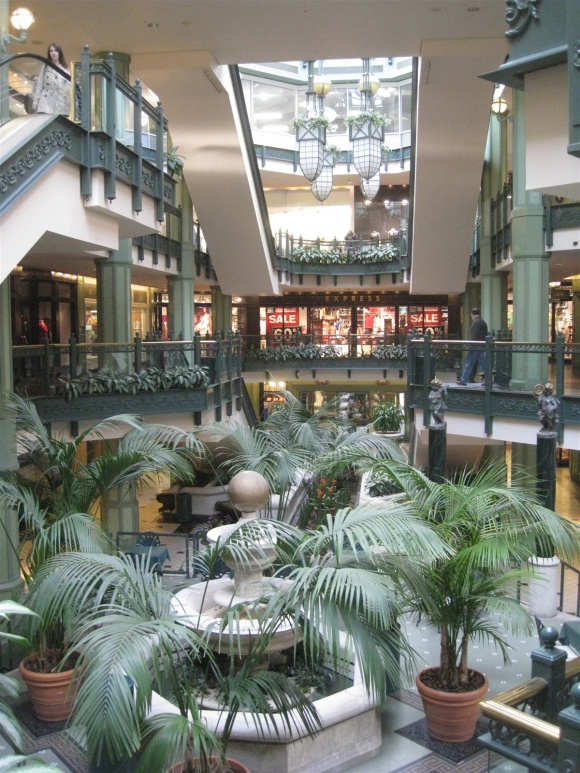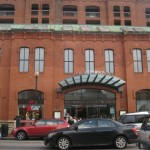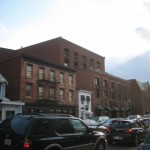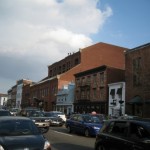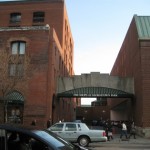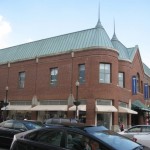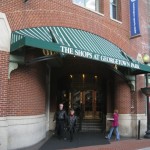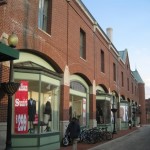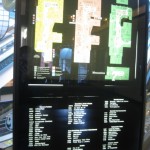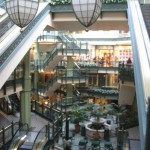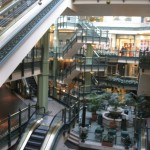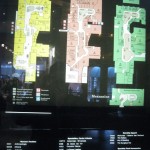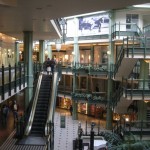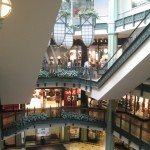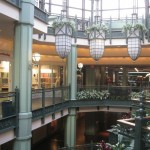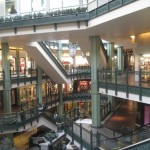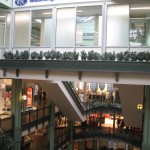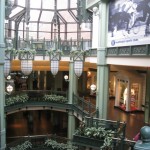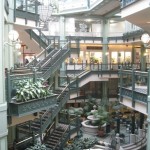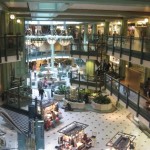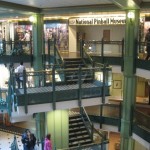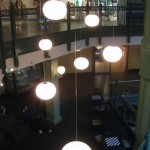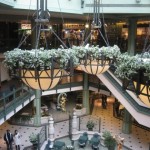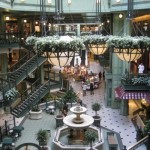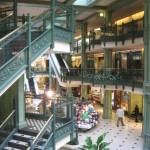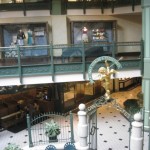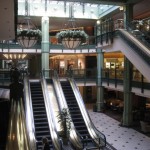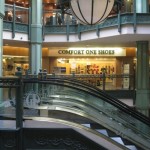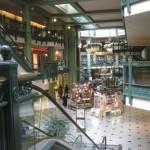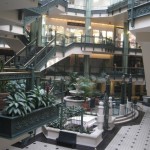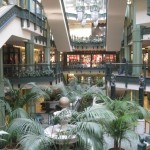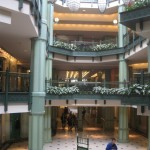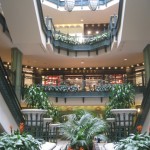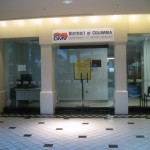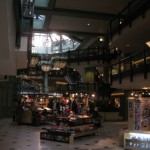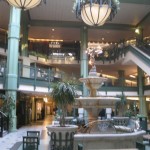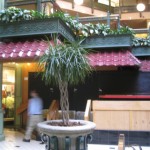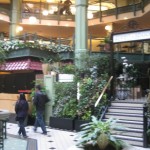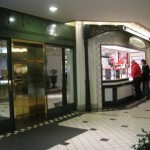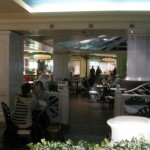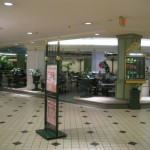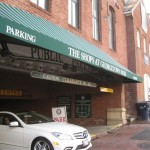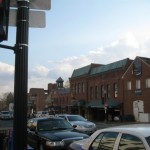The neighborhood of Georgetown is located within Washington, D.C., only a couple miles from the White House, Pentagon, Capitol, National Mall, and all its monuments. Originally a separate city founded in the 1700s, Georgetown’s early residents included big names like Thomas Jefferson and Francis Scott Key, and George Washington also worked here while he acquired land for the country’s new federal city.
Georgetown is the only significant, established place within Washington that predates it. The modern city of Washington, planned by Pierre L’Enfant in the 1790s and later completed by Andrew Ellicott, actually came later and eventually swallowed Georgetown completely. As it was the only actual organic city within Washington, Georgetown has always been a center of culture and commerce, with historicity and legitimacy that Washington originally lacked. Georgetown was officially amalgamated into Washington in 1871, and its streets were renamed to coincide with Washington’s streets in 1880.
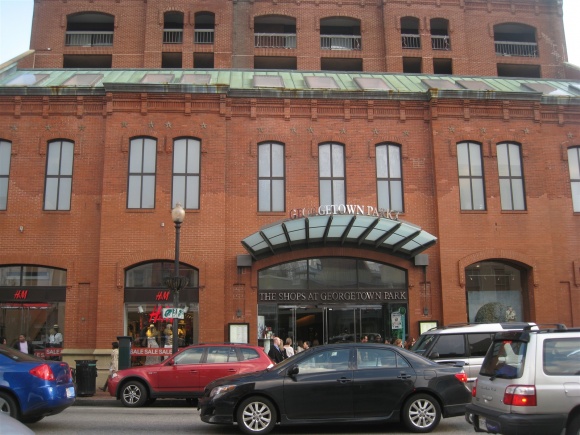 After a period of decline during the 19th and early 20th centuries, Georgetown rose up once again in the 1920s and 1930s after a series of efforts and a growing Washington put it back on the map. A bridge was built in 1915 along Q Street, connecting Georgetown with the rest of the city, making subsequent development inevitable. However, smart urban planners quickly began drafting documents and planning policies to make Georgetown a historic preservation district, which was eventually codified into legislation in the 1950s.
After a period of decline during the 19th and early 20th centuries, Georgetown rose up once again in the 1920s and 1930s after a series of efforts and a growing Washington put it back on the map. A bridge was built in 1915 along Q Street, connecting Georgetown with the rest of the city, making subsequent development inevitable. However, smart urban planners quickly began drafting documents and planning policies to make Georgetown a historic preservation district, which was eventually codified into legislation in the 1950s.
About the same time, the last vestiges of old school industry that powered Georgetown closed, and there was renewed interest in neighborhood redevelopment. As Georgetown gentrified, it transitioned from a largely African-American and blue-collar demographic to house the Washington white-collar elite. Elite families became interested in the neighborhood’s historical nature, and big names returned to the neighborhood. The John F. Kennedy family moved into the neighborhood in the 1950s while he served as Senator, and by 1960 the area was widely known for its fashionability as a result of Jackie Kennedy’s elaborate and well-publicized parties. From the 1960s onward, Georgetown has retained this cachet as the most exclusive, upscale neighborhood in all of D.C., and is the best shopping district as well.
The major retail corridor in Georgetown centers around the corner of M Street and Wisconsin Avenue, with a retail critical mass at this intersection. Today, walking down K Street is a place to see and be seen on weekends, and the roster of stores rivals the better shopping districts of any major world city. From local boutiques and restaurants to national chains, Georgetown is the by far the best cohesive shopping area in all of D.C.
 There’s even a significantly sized mall here – The Shops at Georgetown Park – located directly at the intersection of critical mass at K and Wisconsin. An anchorless mall, The Shops at Georgetown Park was developed in 1975 and opened in 1981 as the planned centerpiece of the Georgetown shopping district. After years of success, in recent years the mall has fallen on hard times and has a nearly 50 percent occupancy rate. The mall is currently considered a failure, and redevelopment is pending. But how did this happen? How could a retail entity that seemed like a turnkey operation fail, in the middle of the best shopping district in one of the largest and most important cities in the country.
There’s even a significantly sized mall here – The Shops at Georgetown Park – located directly at the intersection of critical mass at K and Wisconsin. An anchorless mall, The Shops at Georgetown Park was developed in 1975 and opened in 1981 as the planned centerpiece of the Georgetown shopping district. After years of success, in recent years the mall has fallen on hard times and has a nearly 50 percent occupancy rate. The mall is currently considered a failure, and redevelopment is pending. But how did this happen? How could a retail entity that seemed like a turnkey operation fail, in the middle of the best shopping district in one of the largest and most important cities in the country.
The site where the current mall stands, located in the middle of historic Georgetown, is naturally ripe with history. In the 1830s, the site was a tobacco warehouse which opened directly up onto the Chesapeake and Ohio Canal, located right behind it. Part of the modern structure today includes pieces from this original use. In the 1850s, the site became home to stables for the horses that powered the first horsecar line between Washington and Georgetown. Later, the site was converted into a shop for streetcar maintenance, and became disused after Washington abadnoned its streetcar lines in 1962. Thereafter, the United States Defense Communications used the building for secret-God-knows-what until the 1970s.
In 1975, Donohoe Construction Company, in partnership with Western Development Corporation, got a hold of the site with plans for a mixed-use retail and condominium project. The project was said to be one of the largest on the East Coast at the time, and included preserving the 100-plus year old facade on Wisconsin Avenue, building a 300-space underground parking garage into solid rock, and adding superstructure to the 10-foot thick, 35-foot high wall which was used to build the C&O Canal.
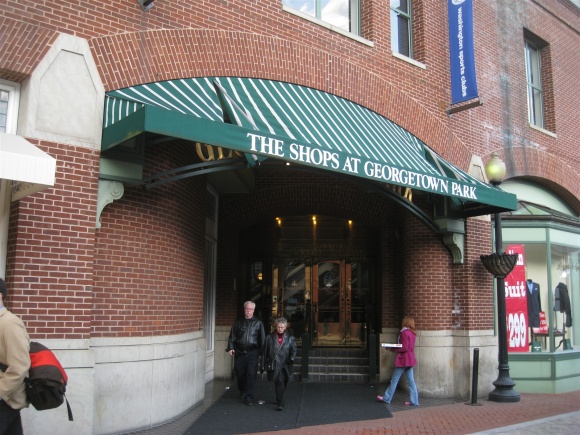 The partnership’s plans went ahead, and phase one of the project, which included a Conran’s home goods store and 35 condominiums above it, opened in 1980. The next year, on September 27, 1981, a 100-store retail mall called The Shops at Georgetown Park opened adjacent to phase one with 128 additional condominiums. The mall contains three full levels and a mezzanine level, houses a food court in the basement, and is listed at just under 450,000 square-feet of leasable space according to the International Council of Shopping Centers. However, a recent article in the Washington Post cites the mall only has 300,000 square-feet of space. Hmmm. The mall is visually stunning, yet slightly dated, with wood floored hallways, skylights, cast-iron braces, brass and glass elevators, and hand-built oak kiosks. It feels a little darker than it should in there, even during the day.
The partnership’s plans went ahead, and phase one of the project, which included a Conran’s home goods store and 35 condominiums above it, opened in 1980. The next year, on September 27, 1981, a 100-store retail mall called The Shops at Georgetown Park opened adjacent to phase one with 128 additional condominiums. The mall contains three full levels and a mezzanine level, houses a food court in the basement, and is listed at just under 450,000 square-feet of leasable space according to the International Council of Shopping Centers. However, a recent article in the Washington Post cites the mall only has 300,000 square-feet of space. Hmmm. The mall is visually stunning, yet slightly dated, with wood floored hallways, skylights, cast-iron braces, brass and glass elevators, and hand-built oak kiosks. It feels a little darker than it should in there, even during the day.
When it opened, the mall housed many upscale national retailers as well as local boutiques, restaurants, and most of the stores were in line with Georgetown’s upscale atmosphere. Original stores included the East Coast’s first Abercrombie and Fitch, Godiva, Ann Taylor, and a small branch of D.C.-based Garfinckel’s department store.
The Shops at Georgetown Park was an instant success. Many people came from all over the D.C. metro area to shop at the mall. A well designed mall, access was given to all four sides of the mall, to all levels, meaning no part of the three-level mall was a functional dead end. In addition, the stores along M Street, a popular pedestrian corridor with retail boundaries far in excess of the mall’s footprint, were given separate entrances, allowing M Street’s retail corridor to retain cohesion and seamless facade of continuous retail. In fact, the mall is almost too camouflaged from the street; its entrances aren’t as grand as at suburban malls.
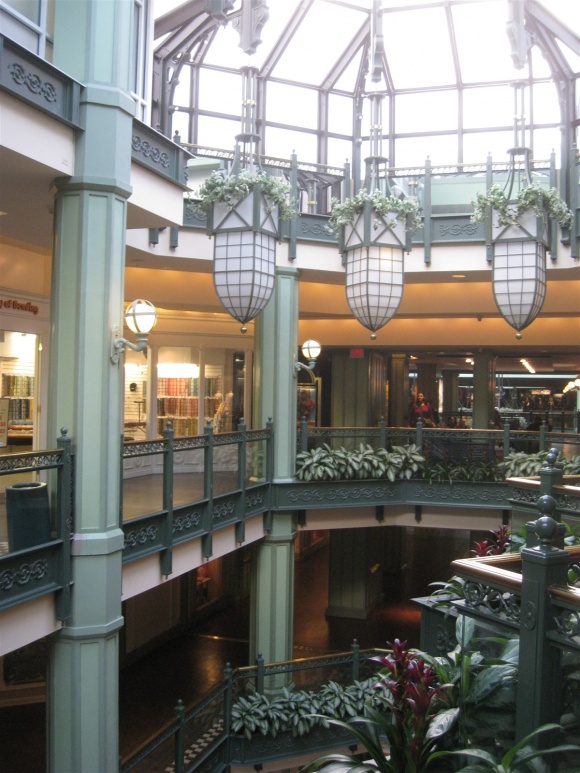 Georgetown Park retained its glory even well into the last decade, the 2000s. In 1994, it was even featured prominently in the hit movie True Lies, where Arnold Schwarzenegger’s character has a chase scene and an ensuing shootout erupts throughout the mall. According to web.archive.org, many popular stores were even present at the mall in 2001, including Abercrombie, Aeropostale, Ann Taylor, Casual Corner, Benetton, FAO Schwarz, The Limited, Godiva, Polo, Talbots, Victoria’s Secret, Waldenbooks and Sharper Image. By 2007, many of these were gone, and today only a handful of national stores remain.
Georgetown Park retained its glory even well into the last decade, the 2000s. In 1994, it was even featured prominently in the hit movie True Lies, where Arnold Schwarzenegger’s character has a chase scene and an ensuing shootout erupts throughout the mall. According to web.archive.org, many popular stores were even present at the mall in 2001, including Abercrombie, Aeropostale, Ann Taylor, Casual Corner, Benetton, FAO Schwarz, The Limited, Godiva, Polo, Talbots, Victoria’s Secret, Waldenbooks and Sharper Image. By 2007, many of these were gone, and today only a handful of national stores remain.
Many of the stores in Georgetown Park today are local, and the center sports a nearly 50 percent occupancy rate, down drastically from recent years. According to a 2010 Washington Post article, the mall was only 10% vacant at the beginning of 2009, and that jumped to 56% by April 2010. This isn’t shocking at all, but Yelpers have even taken notice.
Why did the mall clear out so quickly? The mass exodus is at least partly the result of a squabble between two real estate giants in the area. Western Development, who originally helped build the mall, purchased the mall in 2006, and inked a deal for Bloomingdales to come to the mall in 2008. Unfortunately, the economy also collapsed about the same time, and Bloomingdales backed out. Western defaulted on their loan and the mall went into foreclosure. It was eventually sold at auction to a New York firm, with Vornado brought on to manage. Adding another wrench to the situation, Georgetown developer Anthony Lanier also lay legal claim to the mall. Western said that in claiming a right to the property Lanier prevented the owners from refinancing it for redevelopment or from signing leases with retailers, which caused the mall to empty out.
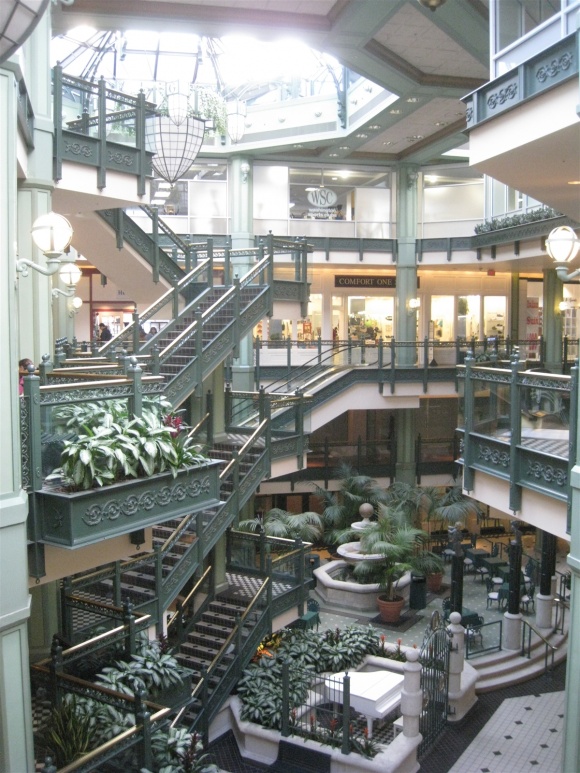 In 2011, renewed interest in the mall has sparked rumors about redevelopment solutions. According to the Georgetown Current, a local paper, both Target and Bloomingdales are indeed coming to the troubled mall. An interesting combination, it will surely spawn debates about the appropriateness of the modification as well as the onerousness task of including these stores without disturbing the local character and charm of Georgetown itself. Also, surely some people feel that Target doesn’t necessarily belong in Georgetown, though others will disagree and say that Target has enough of a hip cachet and vibe to belong here. Some even feel that a shopping mall of any scale here is not only unnecessary, it’s bad, and they have a point too. Places like Georgetown don’t really need malls.
In 2011, renewed interest in the mall has sparked rumors about redevelopment solutions. According to the Georgetown Current, a local paper, both Target and Bloomingdales are indeed coming to the troubled mall. An interesting combination, it will surely spawn debates about the appropriateness of the modification as well as the onerousness task of including these stores without disturbing the local character and charm of Georgetown itself. Also, surely some people feel that Target doesn’t necessarily belong in Georgetown, though others will disagree and say that Target has enough of a hip cachet and vibe to belong here. Some even feel that a shopping mall of any scale here is not only unnecessary, it’s bad, and they have a point too. Places like Georgetown don’t really need malls.
Personally, I feel adding Target and Bloomingdales is forward-thinking for a mall. In today’s retail climate malls can’t afford to be universally upscale – or downscale, for that matter. Adding a mix of retailers will get more people in the door, and having the second Target in the District will certainly prove popular here.
A major question remains, though, regarding the redevelopment rumors: how will the additional anchors stack in the mall? I’ve read that Target will occupy the lower level, where a moribund food court now sits, but what about Bloomies? At the very least, half of the mall’s retail space will disappear. What will become of the other half? Will it remain an enclosed mall?
We’ve visited Georgetown Park a few times in the past 10 years, and have seen the decline first-hand. Even a few years ago, the mall seemed to be doing a lot better. It’s kind of interesting that it didn’t die due to consumer preferences, and instead emptied out due to bickering between owners. At least now the redevelopment is apparently back on track, and the mall will be rejuvenated with these new anchors.
Pictures from Spring 2011:
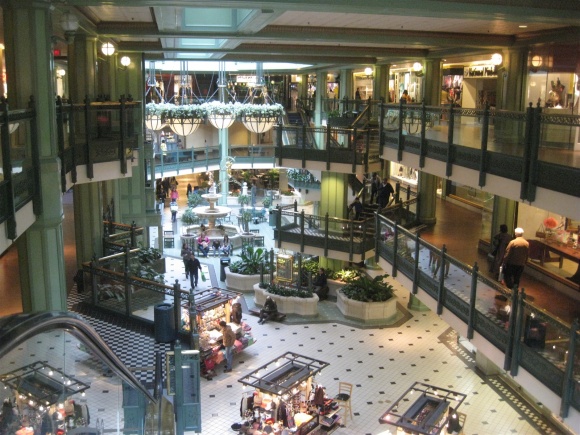 on September 27, 1981, a 100-store retail mall called The Shops at Georgetown Park opened adjacent to phase one with 128 additional condominiums. The mall contains three full levels and a mezzanine level, houses a food court in the basement, and is listed at just under 450,000 square-feet of leasable space according to the International Council of Shopping Centers. The mall is visually stunning, yet slightly dated, with wood floored hallways, skylights, cast-iron braces, brass and glass elevators, and hand-built oak kiosks. It feels a little darker than it should in there, even during the day.
on September 27, 1981, a 100-store retail mall called The Shops at Georgetown Park opened adjacent to phase one with 128 additional condominiums. The mall contains three full levels and a mezzanine level, houses a food court in the basement, and is listed at just under 450,000 square-feet of leasable space according to the International Council of Shopping Centers. The mall is visually stunning, yet slightly dated, with wood floored hallways, skylights, cast-iron braces, brass and glass elevators, and hand-built oak kiosks. It feels a little darker than it should in there, even during the day.